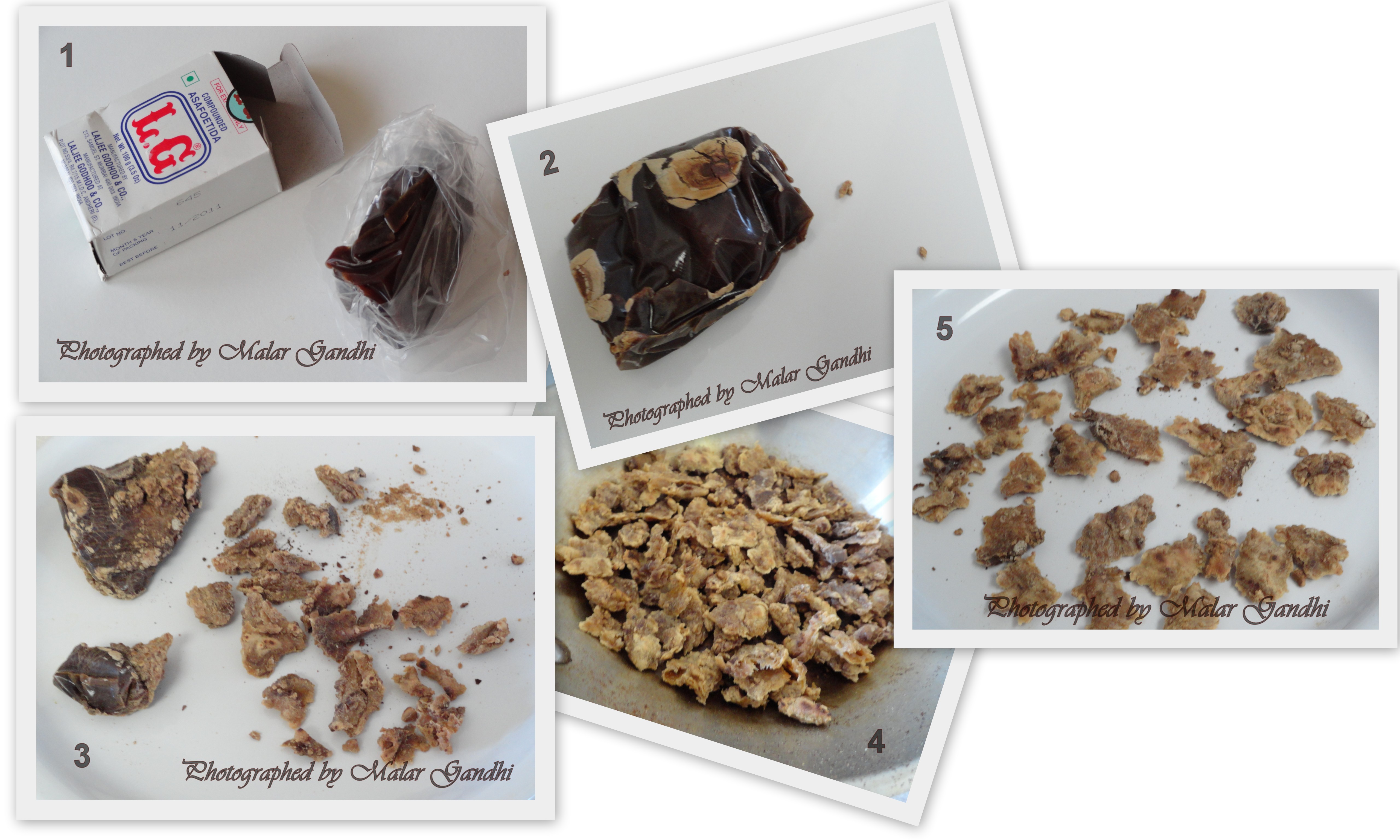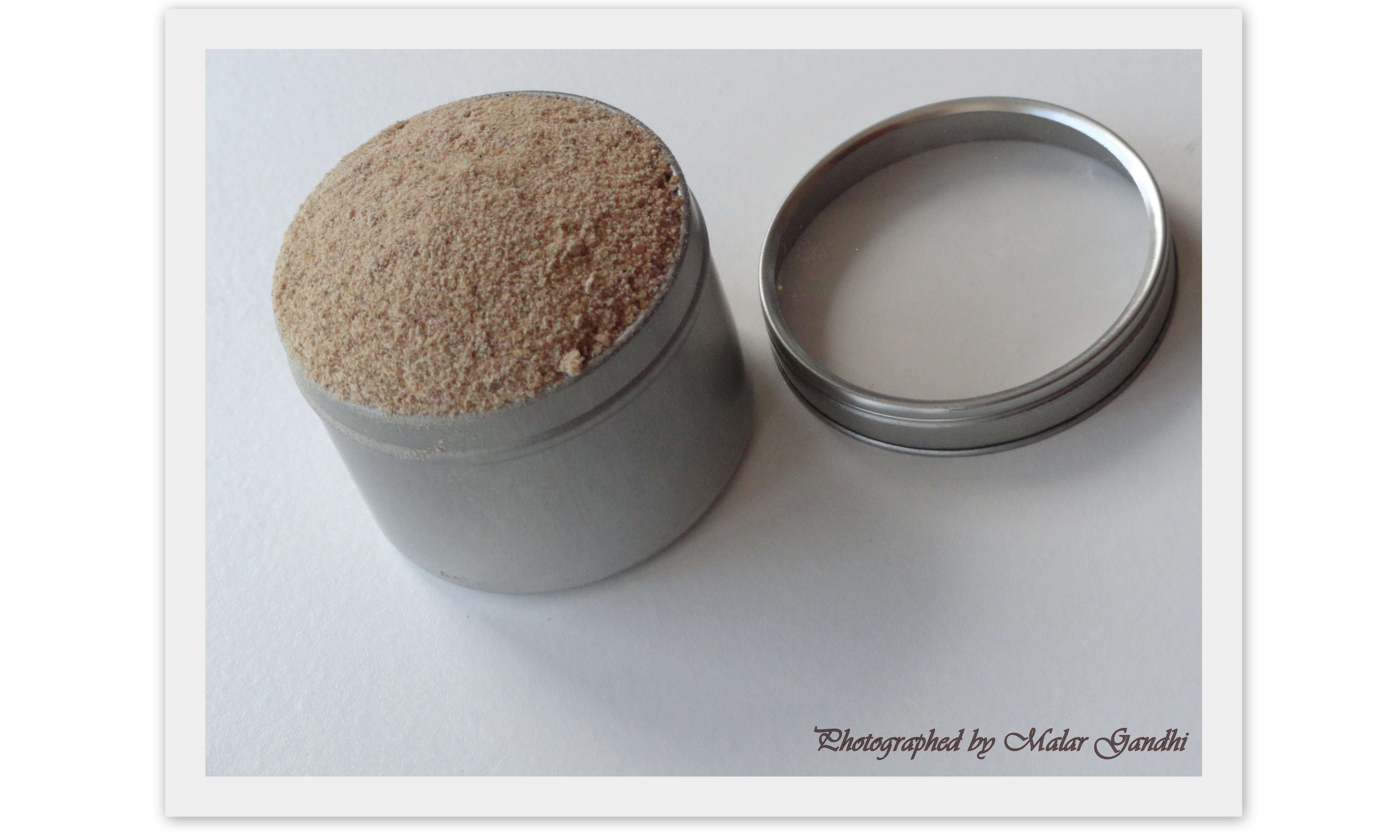
Image – Courtesy Wikipedia
Asafoetida is one of the strangest and strongest of all spices. It comes from a perennial plant, that belongs to the carrot family native to the mountains of Central Asia. Ferula asafoetida looks something like a giant fennel plants, growing up to five feet, which develops massive tap roots varying from 6-7 inches (15 cm) in diameter! The spice is obtained when the foliage goes yellow, the root is exposed and its surface is periodically scraped to wound it! And, when the plant’s protective sap gathers around the wound…its simply left to harden. So, this particular sap turned resin (plant’s wax) is in fact is the spice! Which has volatile sulfur compounds in their oils and it gives out a distinct odor…a strong, sulfurous note! The smell is so over-powering that the resin collected is commonly ground and much diluted for the commercial market.
When it is sold commercially, the ground asafoetida is always combined with rice or wheat flour to prevent lumping. However, it is also adulterated with barley and sometimes even chalk! Therefore, I hope this post on how to blend asafoetida at home may be helpful for some of us. However, many of you could feel that the smell is so alarming! As, when it is exposed to heat, it exudes sauteed onions and garlicky aroma (just multiply this smell by 20)! So, I won’t be surprised if you decide to purchase ground asafoetida! In that case, I recommend to use twice the quantity called for in the original recipe.
- Buy a quality brand lump asafoetida. Personally I prefer LG, brand.
- Heat a wide skillet, and heat the whole lump in it. Medium heat will do.
- When it develops white spot, flip over and continue heating the other side for another 2-3 minutes.
- Once the whole lump has too many spots, remove from heat.
- Now, it should be malleable to make into pieces. Beware, the latent heat could harm your palm.
- Heat the skillet again, and throw in the pieces, do not load the container…heat only few pieces at a time.
- You will notice …its bulging and popping up like a pop-corn…when you see this, remove from heat instantly. Because you don’t want to cook it or char it any further!
- Again divide these popped asafoetida pieces into teeny-meeny pieces, set aside. Repeat the same for all the remaining portion.
- Re-heat the skillet, one more time…arrange these tiny pieces and dry-toast briefly for a minute or so.
- Add a pinch of salt to it and blend the whole portion to fine powder.
- Store them in an air-tight container in a dark-dry panty shelf.
 Asafoetida is the most favored spice in India. As majority of the population is practicing vegetarianism (some 85%). Besides, many Hindus and Jains are forbidden to use garlic, onions and other alliums (prohibited in the religion, because they contain buds, which would otherwise grow into a new plant). This spice simply gave the impression of onions, garlic, meat and became a prominent ingredient in our kitchens! Today, we can’t think of making lentils soup (dhall and sambar), chutneys, pickles and some savory snacks without including it! According to Ayurveda (Ancient Indian Medical Compendium), it stimulates appetite and promotes digestion, making it a perfect choice for incorporating more into our appetizers.
Asafoetida is the most favored spice in India. As majority of the population is practicing vegetarianism (some 85%). Besides, many Hindus and Jains are forbidden to use garlic, onions and other alliums (prohibited in the religion, because they contain buds, which would otherwise grow into a new plant). This spice simply gave the impression of onions, garlic, meat and became a prominent ingredient in our kitchens! Today, we can’t think of making lentils soup (dhall and sambar), chutneys, pickles and some savory snacks without including it! According to Ayurveda (Ancient Indian Medical Compendium), it stimulates appetite and promotes digestion, making it a perfect choice for incorporating more into our appetizers.
Recipes
Recent Posts
- Saturday Special – Saathvik Meals
- Kebab – Taking only one bite at a time!
- Coin Parotta – Small Things Matter
- Bonda – Rainy Day’s Snack
- Chappathi Making Board & Rolling Pin – Matters!
Recent Comments
- MahiArun on Idichakka Thoran – Kerala Special
- veena on Idichakka Thoran – Kerala Special
- M.P.Gandhi on Idichakka Thoran – Kerala Special
- M.P.Gandhi on Banana Milkshake – Wholesome Meal
- Manjula on Banana Milkshake – Wholesome Meal








I used to hate the smell of asafoetida when I was a kid. But now I have got to like it and love using it. I usually buy the ready blended one. I’ll look out for the block version next time I go to the Indian store.
nice post malar
Hi Malar,
Very interesting and lovely article about asfoetida. We use it everyday but dont know the facts. My amma also does the same grinding procedure until this day. I do it only when I make podis. But after reading your post my thoughts are changing, to grind the asfoetida and store it is always better.
You won’t believe Malar! I took some pictures for the same post long back. I brought a big pack of LG perungayam from India n took pictures to publish in the blog. But some how I missed posting it. )) it’s been years now, still I have some left.
)) it’s been years now, still I have some left.
I broke the big chunk into small pieces and powder it using mortar&pestle. Chinna dabba alavukku powder pannuven, then after i used up that, I will make the powder again.
You are absolutely right about ready made hing powders. People who use katti perungayam won’t go back to ready made powders.